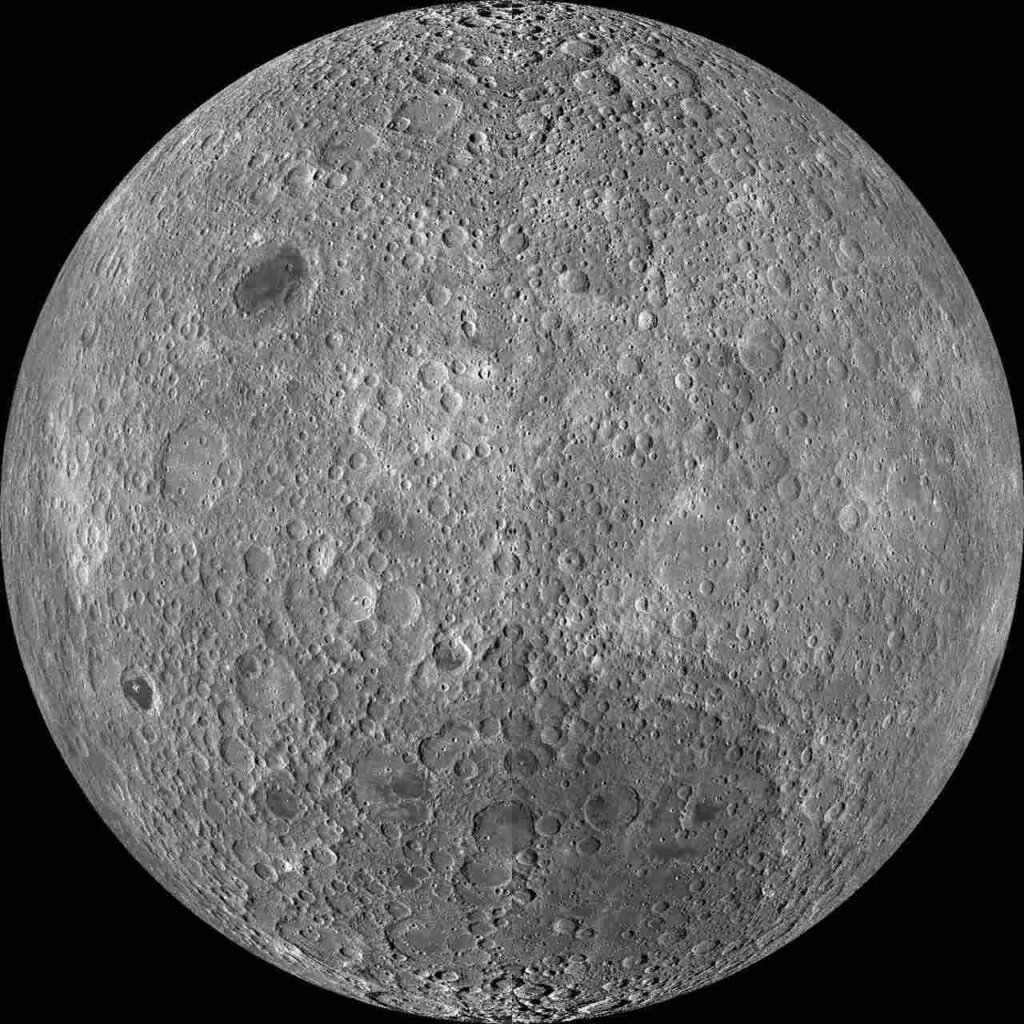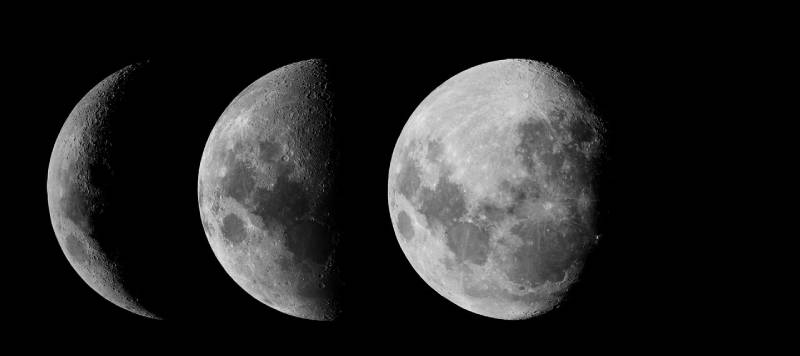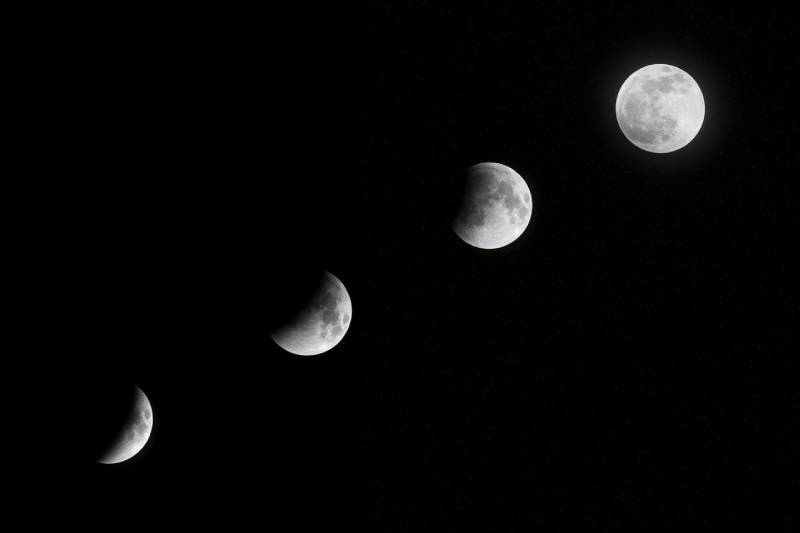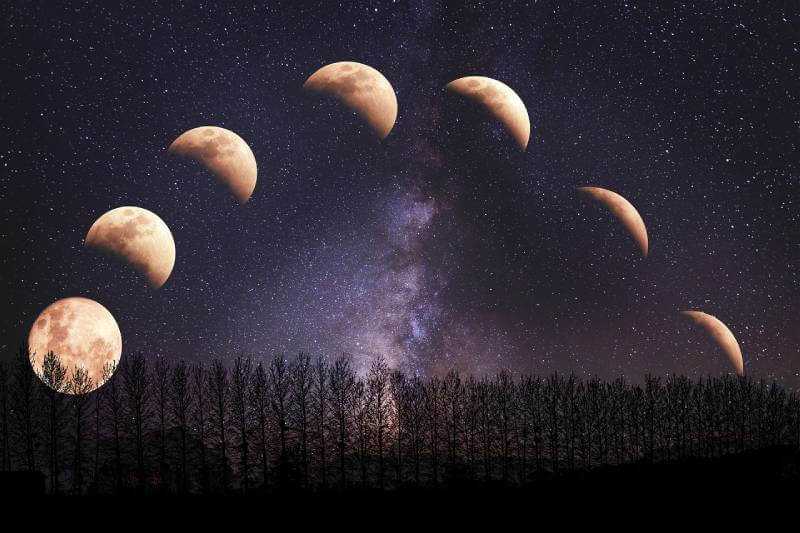The Moon has captivated people on Earth for millennia. We know that the Moon doesn’t actually change, but it can appear to change throughout the lunar cycle. We have marveled at the ever-changing Moon and wondered, “How do moon phases work?” How is it possible for the Moon to look full and beautiful one night and then only appear to be a little sliver of a moon another night?
Tidally Locked
The Moon and the Earth are tidally locked. What does that mean? That means that the Earth and the Moon are synchronized so that we orbit at the same pace. Because we are orbiting at the same pace, we only see one side of the Moon and never the other side. We have never actually seen “the far side of the moon” without the help of technology.

The first photos of the other side of the Moon were taken by Soviet Probe Luna in 1959 during the infamous Space Race era. Since then, we have had many missions to visit the other side of the Moon to learn more about it and to investigate the differences between the side we see and the side we don’t see.
Scientists learned that the other side of the Moon is not actually the “dark side” and indeed experiences just as much light as the front side. Another thing that they learned is that the other side experiences lunar phases much like the front side.
What Are the Moon Phases?
There are eight main lunar phases that the moon experiences. We have seen all of them and have noticed the changes that it makes throughout the month. The eight lunar phases are as follows:
● New Moon
● Waxing Crescent
● First Quarter
● Waxing Gibbous
● Full Moon
● Waning Gibbous
● Third Quarter
● Waning Crescent
A lunar cycle is approximately 29.5 days, so we usually see all of the different phases of the Moon within a month.

New Moon
The lunar journey begins with the New Moon phase. The New Moon phase is when the Moon is positioned between the Earth and the Sun. From where we are on Earth, the Moon appears to be invisible because the side that is illuminated is facing away from us. The New Moon tells us that it is about to start its Lunar Cycle.
Waxing Crescent
The lunar journey continues into a Waxing Crescent phase. The Moon will slowly change from the New Moon, and a piece of the illuminated side begins to peek over the horizon. This will appear as a slender sliver of light while the rest of the Moon appears invisible (or extremely dark). This signals that the progression has begun and the Moon will start showing more of its illumination.
First Quarter
The First Quarter moon signifies that it is halfway to illumination. About one week after the New Moon, the Moon reaches the First Quarter phase. At this point in the lunar cycle, the Moon is completely facing toward the Sun and it is bathed in sunlight. This will show off the striking half-moon appearance.
Waxing GIbbous
As the Moon continues to orbit, the illuminated area begins to expand and that is when we get to witness the Waxing Gibbous phase. During this stage, the Moon will almost appear to be a full moon. You will be able to see the entire Moon except for a tiny slender slice which will appear invisible.
Full Moon
The Full Moon phase is the pinnacle of the lunar cycle. This part of the lunar cycle is amazing. It is when the Moon is positioned directly opposite the Sun that allows us to witness its entire illuminated surface. This phase of the Moon has captivated people around the globe.
Many people believe that Full Moon can really have an impact on people’s personalities and behaviors. There are a lot of inspiring myths, folklore, and even rituals that have occurred throughout history regarding the Full Moon phase.
This moon phase is definitely the most popular and most talked about of all of the moon phases.
Waning Gibbous
This moon phase starts its journey back towards the New Moon phase. The illumination of the Moon begins to diminish and is much less bright than the Full Moon. Even though not as bright at the Full Moon phase, it is still very bright and able to light up the sky.
Third Quarter
The Third Quarter moon is similar to the First Quarter moon in that we only see half of the Moon. However, this time, the opposite side of the Moon is illuminated. Some people might refer to this phase of the Moon as “the half moon”.
Waning Crescent
We have reached our final phase of the Moon. This is the last cycle before returning to the New Moon, where the Moon vanishes from sight. The Waning Crescent is almost nonexistent except for a small slender sliver in the sky. This is in preparation for it to disappear completely.

Our Moon Isn’t the Only One with Phases
Every Moon has phases no matter where they are in the galaxy. If there is a parent star that shines at it, then there are going to be phases that can be seen from the host planet. It would be super interesting to be on a host planet that has many moons because then you could see many moons in different phases in the night sky!
Conclusion
The moon phases are just another testament to the amazing relationships between the Moon, the Sun, and the Earth. The Moon is absolutely amazing and has captivated people for centuries.
Scientists and researchers are constantly trying to learn as much as they can about the Moon and its unique characteristics. People around the world want to be the first to make discoveries and find out new information about the spectacle.
NASA, Space X, and other companies, such as ICON, have teamed up to explore the Moon further. They desperately want to learn more about its phases, its composition, the rocks, and even figure out more about its formation. To do so, NASA and Space X have teamed up for the Artemis Initiative.
The Artemis Missions will entail sending more astronauts to the Moon and then, over time, setting up a self-sustaining home base. With the new home base, the astronauts should be able to stay on the Moon longer, which will allow them to research more and study more about the Moon and its characteristics.
It will be exciting to see if they make more discoveries about the Moon and its phases!

